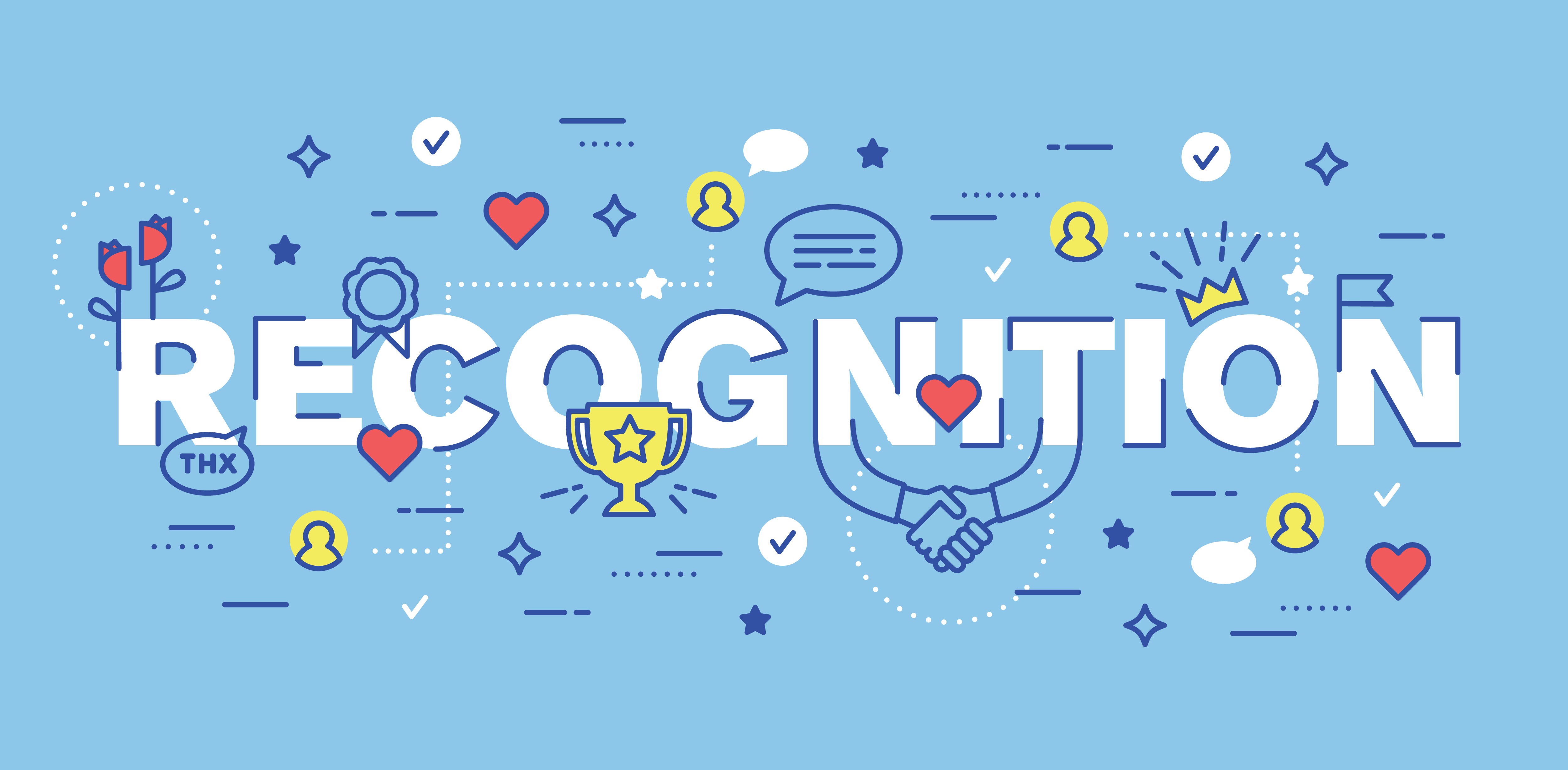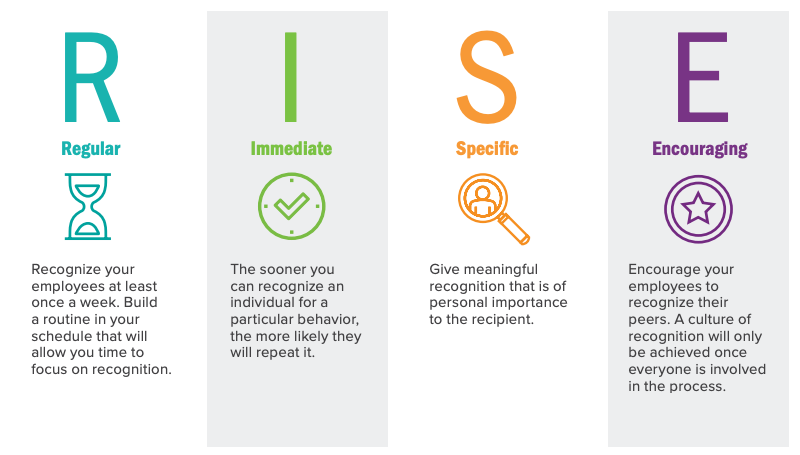29 Employee Recognition
Arley’s comments: I think this is a good start. You have done some effective research and I like how you’ve included videos and photos. As Judy mentioned, I think we need a little more depth here. For example, you show the RISE model, but could do a bit more work explaining the model and how the reader can apply it. For example, let’s say I want to recognize my employees. How do I decide how I can best motivate them? Should I start with a survey? How do I decide what method is best? A good structure here might be “What is employee recognition,” “Why is it important” and “How can an organization do this?”
Judy’s comments:
Overall there is a lot of good info here that is based on HR best practice resources however it is just a start – more depth is needed (e.g. could include key learnings from the videos). It is important to differentiate between monetary and non-monetary rewards in your lists (note: use bullets when listing) as well as provide information about each reward/recognition as not all are self-explanatory. I would also suggest including examples of what is given to employees (the reward) for each recognition type – ideally link to articles with company examples. A couple of challenges with reward and recognition programs are: the costs and knowing what types of recognition motivates and engages your employees (not everyone is the same). In all of this, it needs to be clear as to what HR’s role is. On a separate note, watch using the acronym ER as typically it is used for employee relations and R&R and used for rewards and recognition.
Introduction
In the new digital world, most people work from home or slowly return to office mode. It does not seem to be enough to recognize the outstanding performance of employees. Employees all over the world are experiencing psychological, physical, and health changes in their lives. It is necessary to recognize, motivate and reward employees who perform well, show compassion to their colleagues, contribute to the team with new ideas, understand the organization’s culture and values, and live every day.

(RSW Creative, 2016)
Definition:
Employee Recognition (ER) is an acknowledgment of an employee´s achievement (SHRM, 2016).
They can be,
- Monetary rewards – Rewards that are paid directly to employees for achievements that involve direct Money (SHRM, 2016). This can be considered as a salary hike, incentives, holiday trips, movie tickets, cash bonuses, and stock awards (Hansen et al., 2002b). When designing a company’s monetary reward policy, management, including human resources, has the responsibility to ensure that benefits should be as broad as possible. It requires reasonable planning and effective implementation (Hansen et al., 2002b).
- Non-Monetary Rewards – This kind of reward doesn’t include direct money but provides new opportunities, different allowances, and attractive gift items (SHRM, 2016). Non-monetary rewards can include trophies, cabin upgrades, allowances, use of company facilities, diaries, promotions, etc (Hansen et al., 2002b).
Purpose:
The main goal of Employee Recognition is to reinforce specific behaviors, values, and cultures that result in a company´s better performance and financial positive outcomes (Andriotis, 2018). The employee reward and recognition system are not only beneficial to people, but effective communication is an effective tool to encourage them to create and bring you business (Hansen et al., 2002). In short, a business firm’s profits and performances and the performance and effort of HR in the company have a direct relation (Hansen et al., 2002).
- ER helps attracts and retain high-performance employees
- It increases employee productivity and competitiveness
- It increases the company´s profitability and employer brand
- It reduces employee absenteeism and turnover
- It encourages employee training and development (SHRM, 2016).
(Bonusly, 2020)
The above video provides us with some great employee recognition values.
- The positive impact of the gratitude method
- Cultural identification and case identification
- The importance of team value in the identification process
- The characteristics of effective identification
- Recognized best practices
- The positive impact of peer recognition
- Different recognition, programs
- Impact of communication
- Measure the effectiveness (Bonusly, 2020).
Types of Employee Recognition
- Years of service
- Performance achievement
- Retirement
- The employee of the week, month, and year
- A suggestion of ideas or new ways of doing the job
- Public service (SHRM, 2016).

Source: (Wong, 2020)
RISE MODEL
In this progressive business world, people pay more attention to their own growth and development (Wong, 2020). For this reason, recognition plays a vital role for employees to cooperate with the company to promote employee and business growth (Wong, 2020). The RISE model is an activity that helps organizations design and simplifies the giving and receiving of valuable and effective feedback on factors that may affect productivity (Wong, 2020). The short form, R.I.S.E is a useful way to summarise the best practices of these four-employee recognition programs (Wong, 2020):
Regular: The important thing is that employees should be recognized by colleagues regularly. Appreciate good performance, provide reliable feedback, and then automatically set expectations for the company’s achievements (Wong, 2020).
Immediate: Recognition promptly can help to stiffen the confidence and trustworthiness of the company’s employees. The immediate response to their efforts and good performance can motivate them to work hard to achieve their goals and support the organization to develop faster (Wong, 2020).
Specific: During the reward time, the company should specify the efforts and values that individuals bring to the company’s values. Mentioning the factor that impressed the company, can boost up the result for future performance of the employee (Wong, 2020).
Encouraging: Recognition should positively influence and motivate employees. If the company’s employees are recognized as personally valued, it can make a great influence on their own trust and the trust toward the company as well (Wong, 2020).
Some of the well-known organizations/institutions, using the RISE model are:
- American Systems
- FEMA
- CATMEDIA
- Edutopia
- Concorida University – Quebec, Canada
- Humber Institute of Technology and Advanced Learning – Ontario, Canada
- McGill University – Quebec, Canada
- Queen’s University – Ontario, Canada
- Prairie College – Alberta, Canada
- University of Lethbridge – Canada (Wray Rise Model).
Different recognition programs for the employee and rewards:
- Gift cards
- Take them to lunch for their target achievement
- Access to training and development programs
- Reward them with non-cash rewards
- Cross-training in other company´s properties
- Attendance at a specific meeting or conference
- Monetary reward
- Mentorship programs
- Motivate them with promotion for great achievement
- Arrange social gatherings
- Special plaque, trophy, or medal
- Written or verbal praise by peers, managers, or the CEO (SHRM, 2016).
(Springworks, 2020)
Key Learnings from Video
- Five creative employee recognition
- Tagging employees
- Employee recognition letter
- Surprise day off
- Offer them a lunch
- Showcase the employee’s success story
- Appreciation ideas (Springworks, 2020).
Conclusion
Employee Recognition must be an ongoing process, that employees feel their work is appreciated and recognized when they achieve great results. Furthermore, ER needs to be all-inclusive, meaning all staff must have a chance to be recognized due to his or her performance (Andriotis, 2018).
References
Andriotis, N. (2018, n.d. n.d.). Employee Recognition in the Workplace: The Why and How. Retrieved June 15, 2021, from Efront Learning: https://www.efrontlearning.com/blog/2018/04/employee-recognition-workplace-benefits-ways.html
Hansen, F., Smith, M., & Hansen, R. B. (2002). Rewards and Recognition in Employee Motivation. Compensation & Benefits Review, 34(5), 64–72. https://doi.org/10.1177/0886368702034005010
Why We Need Appreciation (Not Just Recognition) at Work. (2019, January 17). [Video]. YouTube. https://www.youtube.com/watch?v=wG9snTHHYG0
RSW Creative. (2016, November 3). The Need for Employee Recognition, and How to Do It Right. Retrieved June 18, 2021, from RSW Creative: https://rswcreative.com/need-employee-recognition-right/
SHRM. (2016, October 21). Employee Recognition. Retrieved June 8, 2021, from SHRM: https://www.shrm.org/resourcesandtools/tools-and-samples/presentations/pages/employeerecognition.aspx
Bonusly, director. How Do I Build a Successful Employee Recognition Program? YouTube, YouTube, 29 Jan. 2020, www.youtube.com/watch?v=bRM19CxIDek.
Wray, E. (2011). Peer-to-Peer. RISE Model for Meaningful Feedback. https://www.risemodel.com/peer-to-peer 9846710452
Wong, K. (2020, June 8). 5 Meaningful Sample Employee Recognition Letters. Retrieved June 18, 2021, from Achievers: https://www.achievers.com/blog/recognition-letter/
S. (Director). (2020, April 17). 5 Creative Employee Recognition and Appreciation Ideas for 2020! [Video file]. Retrieved July 18, 2021, from https://www.youtube.com/watch?v=_5kJvQgfwQ8
